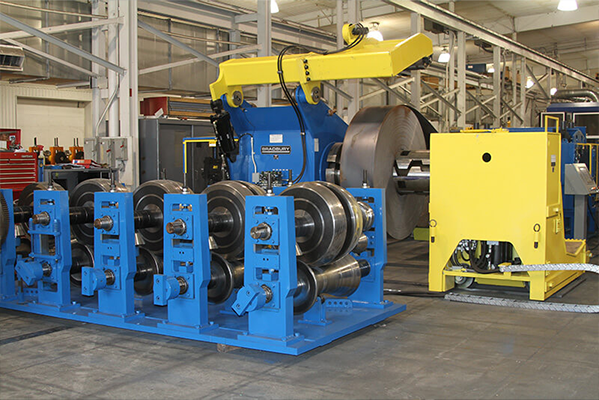Navigation Menu
Contact Us
- Email:
- info@wxavatar.com
- Address:
- Yurong Village, Yuqi Street, Huishan District, Wuxi, China.
Release Date:Apr 30, 2025 Visit:55 Source:Roll Forming Machine Factory
Roll forming is a continuous bending process used to shape metal coils into desired profiles. The speed of roll forming is a critical factor that impacts production efficiency, product quality, and overall cost-effectiveness. Understanding the factors that influence roll forming speed helps manufacturers optimize their processes for different applications.
Typical Speed Range
The speed of roll forming varies depending on material type, thickness, profile complexity, and equipment capabilities. Generally, roll forming lines operate within a range of 10 to 150 meters per minute (m/min).
Simple profiles (e.g., straight channels or angles) can often be formed at higher speeds, typically between 50 to 150 m/min.
Complex profiles (e.g., multi-curved or tight-tolerance parts) may require slower speeds, usually between 10 to 50 m/min, to ensure dimensional accuracy.

Factors Affecting Roll Forming Speed
Material Properties
Thicker or harder metals (e.g., high-strength steel) require slower forming speeds to prevent excessive tool wear or material deformation.
Softer materials (e.g., aluminum) can often be processed at higher speeds.
Profile Complexity
Profiles with multiple bends, tight radii, or intricate shapes demand slower speeds to maintain precision.
Simpler profiles allow for faster production rates.
Tooling and Equipment
High-quality, well-maintained tooling supports faster speeds with consistent results.
Older or less precise machinery may require reduced speeds to avoid defects.
Production Requirements
High-volume orders may justify running at optimal speeds, while small batches or prototype runs may use slower speeds for quality control.
Downstream Processes
If the roll-formed product requires additional operations (e.g., punching, cutting, or welding), the line speed must synchronize with these processes.
Optimizing Roll Forming Speed
To achieve the best balance between speed and quality, manufacturers should:
Conduct trial runs to determine the optimal speed for a given profile.
Regularly maintain tooling to prevent slowdowns due to wear.
Use advanced control systems to monitor and adjust speed in real time.

Conclusion
The speed of roll forming depends on multiple factors, and there is no single "best" speed for all applications. By carefully considering material properties, profile design, and equipment capabilities, manufacturers can select an appropriate speed that maximizes productivity while maintaining product quality.